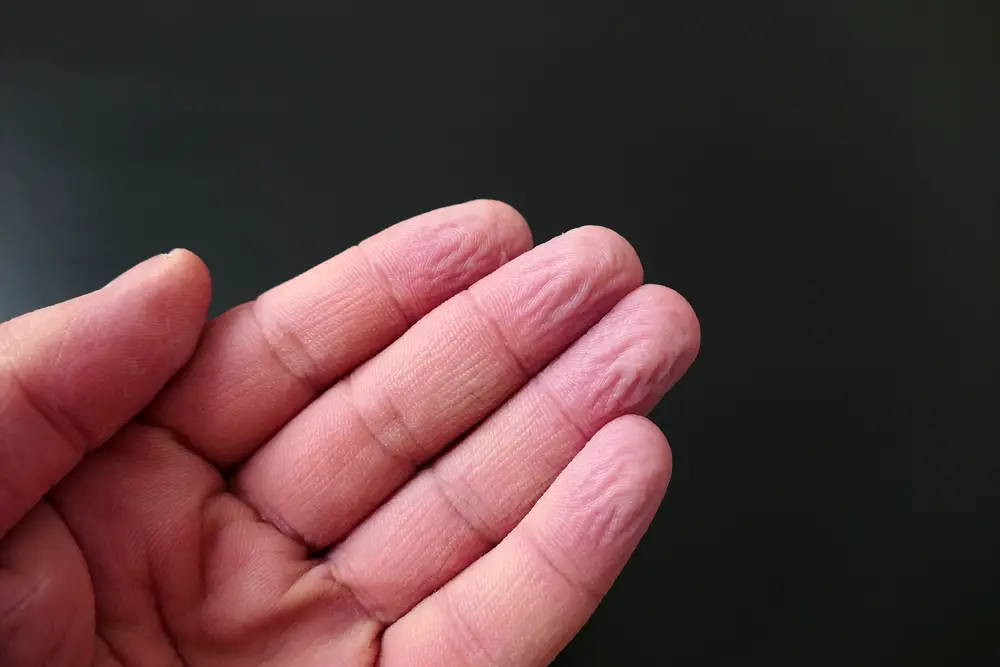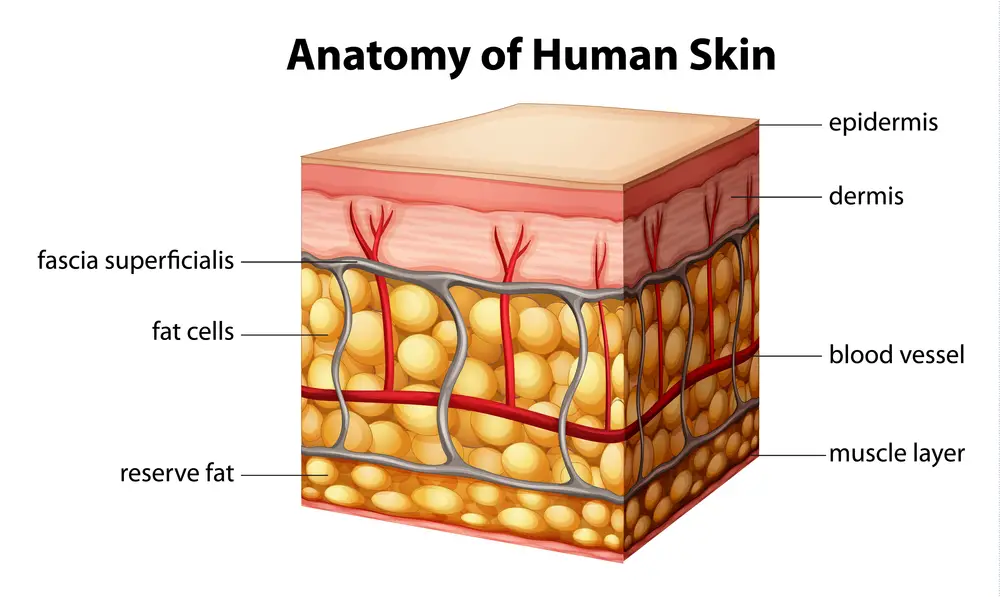We’ve all experienced the wrinkles or prune up of the skin on the hands and feet that develops after being in water for an extended period of time, but how and why does this happen?
First off, the skin is made of layers. The epidermis is the top layer. Below that is the dermis, where smaller blood vessels, nerves, sweat glands, and hair roots reside, and the bottommost layer is the subcutaneous tissue layer. This is where larger blood vessels and nerves are plus fat and connective tissue.
When skin is exposed to water for a prolonged period, the result is wrinkling of the skin on the outer layer, the epidermis. The epidermis is further broken down into four layers; the stratum corneum, granular layer, squamous cell layer, and the basal cell layer.
Many theories abound as to why the skin acts in this way, and the general consensus is wrinkling happens in the stratum corneum of the epidermis, the very top layer of skin. On this layer are further layers of dead skin, or more specifically, dead keratin cells (the same cells that make up finger and toenails). These dead keratin cells absorb water, causing swelling of the skin. Since skin is attached beneath it, the surface of the skin increases, and our bodies compensate for the new surface area by wrinkling the skin. But this isn’t the whole story. There are other things believed to be at play on why our bodies do this.
These outermost layers are stacked one on top of another in a lattice-type system which allows the skin to expand and stretch after absorbing water. It then allows the skin to return to its original shape after drying out. This is all done on the principles of elastic energy.
When the skin is stretched, it builds up elastic energy, which allows it to not only compensate for the increased volume of fluid but also allows it to return to its original position. But if this is the case, then why doesn’t the rest of the body do the same thing? It’s because the hands and the feet have the largest and thickest concentration of dead keratin cells on the body since they are the structures that get the most use every day.
Researchers have another deeper theory on how the skin accomplishes this, and they attribute it to vasoconstriction (or narrowing) of the blood vessels when toes and fingers are put in water. The theory is that nerve fibers are somehow activated by water to decrease in size and that glomus bodies (which regulate body temperature in the skin) decrease their volume. This is believed to be an involuntary reaction that helps cause the wrinkling as structures in the skin are pulled down. Scientists have confirmed this effect since wrinkling of the skin does not happen when someone has had nerve damage in the fingers.
These mechanisms may act in conjunction with each other, or each could be solely responsible for pruning of the fingers and toes. No one really knows for sure. But since these are the believed mechanisms why the skin wrinkles when in water for a prolonged time, why does the body wrinkle the skin in the first place? Does it hold some evolutionary advantage, and if so, what could that be?
One theory as to why this happens was proposed and studied in 2011 by Mark Changizi, an evolutionary biologist. He and his fellow researchers proposed that the wrinkling of the fingers did provide an evolutionary advantage, one that improved grip when the hands or feet were wet by making a natural drainage system for the hand and fingers or the toes and feet.
They had subjects pick up marbles of different sizes with wet and dry fingers to test the theory. They found that subjects picked up wet marbles with wrinkled fingers faster than dry marbles, but when fingers were wrinkled, there was no change picking up dry marbles. It was a simple study to test the question of why our fingers and toes wrinkle in the first place.
So the next time you step out of the shower or bath and see your wrinkled, pruned up fingers and toes, you’ll now have a better understanding of what really had to take place for that to happen. And you might be able to pick up some wet marbles while you’re at it.
Sources: Library of Congress, Scientific American, Daily Mail




